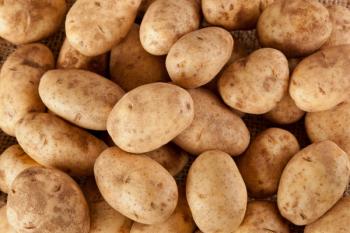
Protein Prediction in Native Chickens Using Near-Infrared Spectroscopy, Part 2
In the second part of this article, we dive into the methodology conducted by researchers from Yunnan Agricultural University in China that successfully used near-infrared (NIR) to analyze the protein content in chickens.
A recent study published in Poultry Science used near-infrared (NIR) spectroscopy to predict the protein content of freeze-dried muscle samples from Chinese native chickens (1). In part two, the methodology is explored, as well as a look into the future as to where the chicken industry is heading.
In the study published in Poultry Science, lead investigator Linli Tao and the team from Yunnan Agricultural University studied seven native chicken breeds from Yunnan province: Qinghua (QH), Nixi (NX), Wuliangshan black-bone (LW), Xinping (XP), Wuding (WD), Piao (PJ), and Chahua (CH) chickens (1). The researchers chose to study these breeds because of their cultural significance in China.
For their study, the research team optimized the NIR spectroscopy models for protein prediction. The first step involved collecting samples from the seven chicken breeds (1). Each breed, consisting of both male and female chickens approximately 300 days old, was slaughtered, and their breast and thigh muscles were immediately sampled (1). The muscle samples were homogenized, freeze-dried for 48 hours, and then milled to a fine powder for analysis (1).
Next, the research team collected the spectral data. To do so, they used a Fourier transform infrared (FT-IR) spectrometer. The freeze-dried muscle samples were scanned in triplicate, with each scan repeated 50 times to ensure accuracy (1). The average spectrum obtained was then used for further analysis.
To develop the calibration models, the researchers divided the seven chicken breeds into two groups. The first group, consisting of the QH, NX, LW, XP, and WD breeds, was used to build the calibration models (1). The second group, which included the PJ and CH breeds, served as prediction samples to validate the models (1).
The researchers applied various spectral pretreatment methods to improve the accuracy of the NIR spectroscopy models. These methods included standard normal variable transformation (SNV), gap-segment first-derivative (GS), and a combination of SNV and GS. These pretreatments were crucial in enhancing the interpretation of the spectra and ensuring the integrity of the calibration models (1).
The team also employed partial least squares regression (PLSR) and leave-one-out cross-validation (LOOCV) techniques to construct the calibration models (1). These models were optimized by removing outlier samples and selecting the most relevant wavelength regions for analysis. The final models were evaluated based on their coefficient of determination for calibration (R2C), standard error of cross-validation (SECV), and the ratio of the standard deviation of the validation to the standard deviation of the calibration (RPDP) (1).
The researchers determined that the best-performing model used a combination of SNV and GS pretreatment spectra at a selected wavelength region of 1,439 to 1,900 nm. This model achieved a coefficient of R2C of 0.95 and a SECV of 1.18 (1). The model’s predictive accuracy was further validated using external samples from the PJ and CH chicken breeds, which were not included in the calibration set (1).
The findings demonstrated that NIR spectroscopy could accurately predict the protein content of freeze-dried muscle samples in Chinese native chickens. The model developed in this study outperformed traditional methods in terms of speed and reliability, offering a practical solution for large-scale poultry production (1).
Implications for the Poultry Industry
By providing a rapid and non-destructive method for assessing meat quality, NIR spectroscopy could streamline the process of quality control in poultry production. This technology could also be used to monitor the nutritional value of chicken meat, ensuring that consumers receive high-quality products (1). Furthermore, the ability to predict protein content in different breeds of native chickens could help preserve and promote these culturally significant breeds (1).
Although the demand for high-quality poultry remains high, the industry has faced challenges globally. For example, Tyson, which products approximately 20% of the beef, pork, and chicken in the United States, has closed eight chicken facilities and conducted layoffs at a ninth facility, resulting in 5,500 workers being laid off (2). The costs of production and feed have increased dramatically. The industry has also not yet recovered from the bird flu epidemic in 2022 that eradicated millions of birds (2).
Christine McCracken, a senior protein analyst at Rabobank, gave a presentation at the 2024 Annual Meat Conference held in Nashville March 18–20, highlighting some of the current trends in the industry and spoke to some of these challenges.
“When the industry made some changes to address some quality issues a few years ago and at the same time moved away from antibiotics and ionophores, we took some of this productivity out of the supply,” McCracken said to Food Business News (3). “We’re now hitting record lows for this time of year — we’re hitting 79% hatchability here this last week, and that normally, historically was running 82% to 83%. That’s a pretty big hit in performance, and I think that’s a big part of why we have seen a drop in production.”
The poultry industry is not impervious to economic challenges. As a result, it remains imperative that scientists continue to explore methods, such as NIR spectroscopy, to help assess the quality of meat since the supply is beginning to slow down in terms of growth.
References
(1) Niu, G.; Zhang, T.; Tao, L. Development and Validation of a Near-Infrared Spectroscopy Model for the Prediction of Muscle Protein in Chinese Native Chickens. Poultry Sci. 2024, 103 (4), 103532. DOI:
(2) Olafsson, B. What Tyson Foods’ Terrible Year Means for the Future of Big Chicken. Sentient Media. Available at:
(3) Shaffer, E. Poultry Market Outlook – The Issues Influencing Production. Food Business News. Available at:
Newsletter
Get essential updates on the latest spectroscopy technologies, regulatory standards, and best practices—subscribe today to Spectroscopy.




